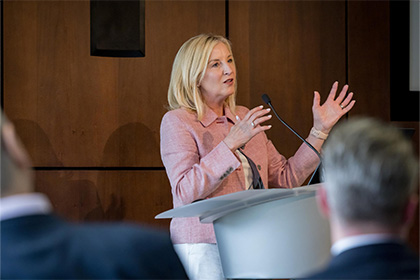Search
Chief Nurse Executive highlights totality of transformative care - Center Times Plus - UT Southwestern
https://www.utsouthwestern.edu/ctplus/stories/2024/state-of-nursing-2024.html

May 9th, UT Southwestern’s annual State of Nursing Address by Associate Vice President and Health System Chief Nurse Executive Susan Hernandez reflected the transformative journey of nursing over the past year.
The University of Texas Southwestern Medical Center at Dallas
https://www.utsouthwestern.edu/media/files/2400/Spanish-Consent-form.pdf
Page 1 of 6 DO NOT DISCLOSE The University of Texas Southwestern Medical Center at Dallas CONSENTIMIENTO PARA PARTICIPAR EN INVESTIGACIÓN Consentimiento Breve de Revisión Título de Investigación: Anormalidades Físicas y Metabólicas en Lipodistrofia y dislipidemias Patrocinador: NIH Investigadores: Número de Teléfono Número de Teléfono (horas regulares de oficina
Event Registration Form - VAN26-1 - UT Southwestern Medical Center
https://engage.utsouthwestern.edu/pages/events/event-registration-form---van26-1
Alumni & Donor Login MyProfile Home Research Education & Training Patient Care Faculty Departments & Centers Newsroom Careers About Us Alumni & Giving Sections MyProfile Alumni Stories Get Involved GIVE Endowments Planned Giving Events Step 1 Selection Step 2 Registration Step 3 Payment The Vanguard Highlighting Advances on the Scientific Frontier Tuesday, September 9 6:00 PM - 7:30 PM Breakthroughs in cancer biology, neuroscience, and immunology are reshaping our understanding of disease and
February is Heart Month
https://www.utsouthwestern.edu/employees/campus-updates/articles/year-2025/heart-month-2025.html

February is Heart Month Published on: January 30, 2025 Share Share on Facebook Share on Twitter Share on LinkedIn Email this page Print this page During February we'll keep this page updated with information about activities focused on improving and learning more about heart health, while inspiring others to do the same. See below for important dates, and come back to this website often throughout the month. Jump to … Welcome Go Red Step-A-Thon Heart Health Fairs Southwestern Running Club
Office of Academic and Physician Recruitment: UT Southwestern, Dallas, TX
https://www.utsouthwestern.edu/about-us/administrative-offices/academic-recruitment//
Office of Academic Recruitment Support Services partners with departments, centers, and leadership to support the recruitment, onboarding, and retention efforts of faculty.
Pubs1995.pdf
https://www.utsouthwestern.edu/media/files/1700/Pubs1995.pdf
1995 Publications Total of 26 1. Cholesterol-raising effects of coffee: clues to regulation of cholesterol metabolism. Grundy SM. J Intern Med. 1995 Dec;238(6):475-7. No abstract available. PMID: 9422032 [PubMed - indexed for MEDLINE]Related citations 2. Abnormal cholesterol distribution among lipoprotein fractions in normolipidemic patients with mild NIDDM. Abate N, Vega GL, Garg A
UT Southwestern No. 1 hospital in Dallas-Fort Worth, Best Hospital rankings show: Newsroom - UT Southwestern, Dallas, Texas
https://www.utsouthwestern.edu/newsroom/articles/year-2022/july-us-news-best-hospital.html?utm_source=facebook&utm_medium=organic&utm_campaign=newsroom&utm_content=usnwrrankings&utm_utm-audience=na&fbclid=IwAR3tY4r24j2gT-WKC5ar4jpT51bBLwVrirgZfpXOMV_c4aSikMhT6vdPJaI

UT Southwestern Medical Center is the No. 1 hospital in Dallas-Fort Worth – the nation’s fourth-largest metro area – for the sixth consecutive year and ranks among the top hospitals nationally in nine specialties ranging from brain to heart to cancer care.
International Stroke Conference Reception - UT Southwestern Medical Center
https://engage.utsouthwestern.edu/events/2024/international-stroke-conference-reception
Join UT Southwestern Medical Center for a reception during the International Stroke Conference.
A New Pharmaceutical Approach to Sobriety and Reversing Drunkenness - UT Southwestern Medical Center
https://engage.utsouthwestern.edu/events/2025/new-pharmaceutical-approach-to-sobriety
Join The Vanguard as we explore advances in treating acute alcohol intoxication.
Pubs2009.pdf
https://www.utsouthwestern.edu/media/files/1700/Pubs2009.pdf
1 2009 Publications Total of 43 1. A genome-wide association study reveals variants in ARL15 that influence adiponectin levels. Richards JB, Waterworth D, O'Rahilly S, Hivert MF, Loos RJ, Perry JR, Tanaka T, Timpson NJ, Semple RK, Soranzo N, Song K, Rocha N, Grundberg E, Dupuis J, Florez JC, Langenberg C, Prokopenko I, Saxena R, Sladek R, Aulchenko Y, Evans D, Waeber G, Erdmann J, Burnett MS, Sattar N, Devaney J, Willenborg C, Hingorani A, Witteman JC, Vollenweider P
